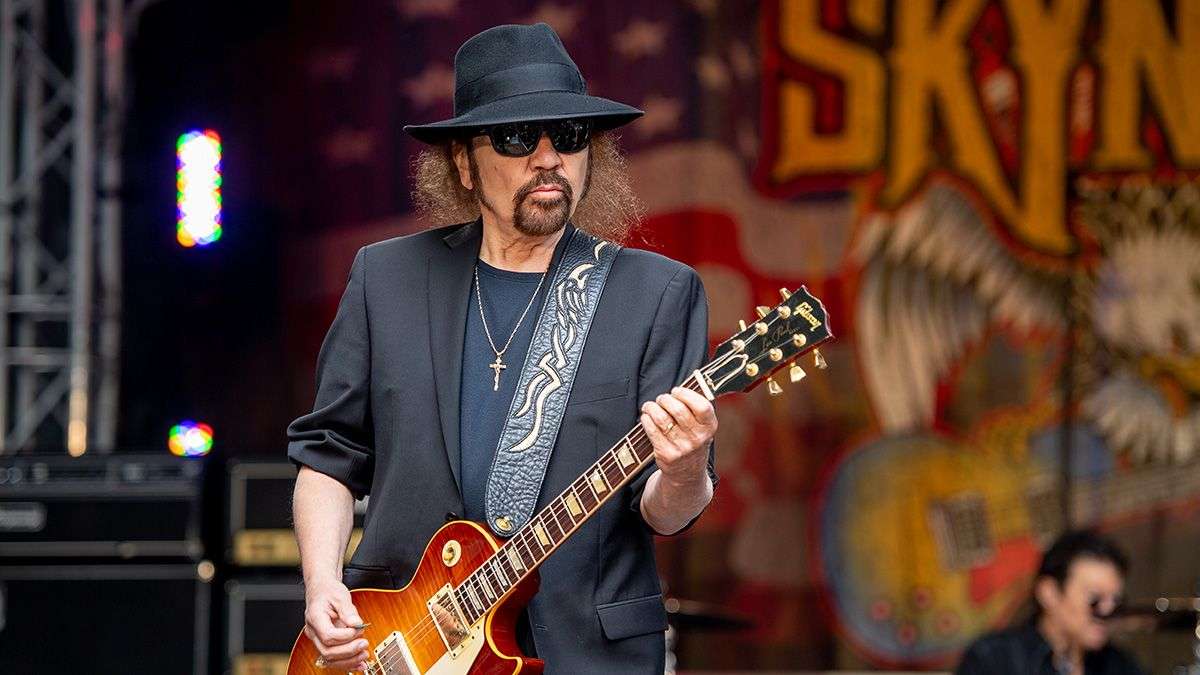How To Cite Music Lyrics : In academic writing, music lyrics should be mentioned using a mix of literary and musical citation rules. This requires a more complex method. When using lyrics in your writing, it is important to follow the rules so that you keep your academic integrity and give credit to the original writers. This summary guide goes over the most important parts and things to keep in mind when using different citation styles to reference song lyrics.
The first thing you should do is find the style guide that your magazine or academic group suggests. There are specific rules for citing songs in each of the main reference styles, like APA, MLA, and Chicago. The American Psychological Association (APA) says to include the tracking number, copyright year, and songwriter’s name in in-text citations, while the Modern Language Association (MLA) says to include the song title, album name, artist’s name, and release medium.
If you are using words from a digital download, an internet streaming service, or a physical record, the way you cite them may be different. Because so much music is now digital, it is very important to know where the music came from.
It is important to think about how you understood the words. If you got the words from the Internet, include the URL so that people can easily check that it is real. When you cite something, keep in mind that some styles may require you to put the music title in quotation marks or capitalize it.

How do you write a citation for a song?
Singer’s Last Name, Singer’s First Name. “Title of the Song.” Title of the Album, album’s ed., Publisher, Year of publication, track number.
If you discuss a song in an academic paper, you need to provide enough details for people to find the source. The citation style you use determines the structure. Common styles are Chicago, MLA, and APA.
In APA style, the last name of the author goes first, then their initials, the name of the recording artist, the song title in sentence case, the copyright year in parentheses, and finally, the album title in italics. If the song was heard online, include both the URL and the record company.
For MLA, you need to include the name of the recording artist, the album title in italics, the name of the recording business, the year, the type of publication, the song title in quotation marks, and the last name of the songwriter, followed by their first name.
If you want to use Chicago style, you can put the name of the songwriter, the song title in quote marks, the name of the recording artist, the album title in italics, the recording label, the year, and the page number if you want to talk about a certain part of the song.
No matter the style, consistency is important. Specifics like the name of the songwriter, the title of the song, and the year it was released help with proper attribution and make it easier for others to find the original work.
How do you in text cite a piece of Music?
Composer/Performer Last Name, First Name, composer. “Piece Title.” Title of album, performance by Performer’s First Name Last Name if known, Publisher or recording label, Year. Optional access date.
Different styles have different rules for citing music in the text. Here is an example from the American Psychological Association (APA) style:
When quoting a song in APA style, the author’s last name is placed in parentheses after the year it was published. For example, (Lastname, Year).
The timestamp in the lyrics can also be used if you are talking about a specific line from the song. Take (Lastname, Year, mm: ss) as an example.
For instance, if you wanted to cite John Doe’s words from the 2020 song “Musical Masterpiece,” you would do so like this: (Doe, 2020).
Say you want to quote certain words, and the song starts at 1:30 in the morning, you would write (Doe, 2020, 01:30).
The full source used in the text should match the one in your references or bibliography. If you want your quotations to be correct and consistent, you should always follow the exact rules of the style you are using, whether it is Chicago, MLA, APA, or another style.
What are the key elements to consider when citing music lyrics in academic writing?
When using song lyrics in school work, there are a few important things to keep in mind to make sure you give credit where credit is due. These parts, which can be very different based on the style of citation (APA, MLA, or Chicago, for example), usually consist of:
Writer or artist:
Include the name of the person who wrote the lyrics or the music. Use their initials after their last name if you can find them.
About the song:
Italics or quotation marks should be used for the song title based on the style of writing.
Artist on the Record:
Include the name of the singer. With this knowledge, you can distinguish different versions of the same song.
The name of the record is:
If you know it, include the name of the album where the song is on. Put the record name in italics.
Year of publication:
Write down the year that the song came out, was published, or got a copyright. This has to be done to make sure the timeline is correct.
Type and size of medium:
Name the method used to get the words, such as a CD, digital download, streaming service, etc.
Track or Page Number:
If you want to look up specific parts of songs written in some styles, like Chicago, you may need the page or track number.
If the URL can be found online, it looks like this:
Put in the URL if the words came from the Internet. This is very true these days, with all the computer stuff we use.
Keeping going:
Follow the rules of the citation style you have chosen and ensure the formatting is the same throughout the whole paper.
If you carefully review these parts and follow the rules of the style you have chosen, your music song citations will be correct, complete, and consistent. This will improve the quality of all of your schoolwork.

What is the citation format for Music?
The most often used citation styles for Music are the Chicago Manual of Style and MLA Handbook for Writers, both of which are located at the library service desk. For more assistance, please consult a librarian or your professor.
Music citations follow different formats depending on the citation style. In this section, I’ll cover the general formats for the Chicago, Modern Language Association, and American Psychological Association styles.
In APA style, the last name of the author goes first, then their initials, the name of the recording artist, the song title in sentence case, the copyright year in parentheses, and finally, the album title in italics. If the song was heard online, include both the URL and the record company.
For MLA, you need to include the name of the recording artist, the album title in italics, the name of the recording business, the year, the type of publication, the song title in quotation marks, and the last name of the songwriter, followed by their first name.
If you want to use Chicago style, you can put the name of the songwriter, the song title in quote marks, the name of the recording artist, the album title in italics, the recording label, the year, and the page number if you want to talk about a certain part of the song.
It is critical to maintain consistency across all styles. When mentioning music in the text or your bibliography, accurate information such as the songwriter’s name, song title, and publication information helps guarantee proper attribution. It makes it easy for others to find the source. Always follow the specific instructions of the citation style you are using to ensure correctness and compliance with formatting standards.
How does the citation of music lyrics differ across citation styles like APA, MLA, and Chicago?
Music lyrics can be stated in a variety of styles, such as Chicago, MLA, and APA (American Psychological Association). Each style has its own set of rules that govern how information is presented. Here is a quick recap:
APA Style:
The typical components of an in-text reference are the song title, the songwriter’s name, and the copyright year in parenthesis. Consider the following (Doe, 2020).
In the reference list, provide the song title, music artist’s name, album title in italics, songwriter’s last name, initials, copyright year, and any other relevant information.
MLA Style:
In-text citations usually include the songwriter’s last name and, if applicable, the page number. Consider the following (Doe 45).
In the works referenced list, include the songwriter’s name, the song title in quotation marks, the recording artist’s name, the album title in italics, the recording company, the year of release, and the format.
Fashion in Chicago:
In the notes, as well as in the bibliography or author-date systems, cite the songwriter, song title in quote marks, recording artist, album title in italics, recording company, and year.
If you are referring to specific lyrics, give page or track numbers.
Although all designs support uniformity, there are differences in specifics, formatting, and informational order. It is critical that you refer to and rigorously follow the standards of the style guide that is appropriate to your academic environment when citing music lyrics.
Do you quote song titles in MLA?
Explanation. Generally and grammatically speaking, put titles of shorter works in quotation marks but italicize titles of longer works. For example, put a “song title” in quotation marks but italicize the title of the album it appears on.
Yes, song titles can be mentioned in MLA (Modern Language Association) format. When mentioning a song, the title should be contained in quotation marks. For example, the title “Bohemian Rhapsody” would be written if you were quoting Queen’s song “Bohemian Rhapsody.”
The following is an example of how to quote a song in MLA format:
The author’s first and last names, “Song Title,” recording company, year, and album title are all samples.
As an example:
Queen. EMI, 1975; A Night at the Opera, “Bohemian Rhapsody.”
When the reference was included, it would look like this in your text:
“Bohemian Rhapsody” (Queen), a masterpiece by the famous rock band Queen, explores a number of musical styles.
It is vital to remember that formatting standards differ based on whether you are citing a digital or physical source. Check the official MLA website or the most recent copy of the MLA Handbook to ensure you are following the most current guidelines.
How to Cite a Song in MLA | Format & Examples
Citing a song in MLA (Modern Language Association) style requires following particular formatting standards to ensure correctness and consistency. This is a quick guide with examples that shows you how to reference a song in MLA format:
Inside-text citation:
In your text, mention the songwriter’s last name and, if available, the page number. Consider the following (Doe 45).
Works mentioned include:
The following is the general format for the Works Cited list:
The first and last names of the author. “Title of Song.” Album title, recording company name, year of release, and page range.
As an example:
Doe, John. Walt Disney Records, “Breaking Free.” High School Musical Soundtrack, 2006, pp. 32–45.
Source: Internet
If you got the song online after the release date, provide the URL you used.
As an example:
Doe, John. Walt Disney Records, “Breaking Free.” High School Musical Soundtrack, 2006, pp. 32–45. YouTube, https://www.youtube.com/watch?v=picture.
To italicize the record title, use quotation marks around the song title, and be consistent with all of your citations. MLA citation requirements provide a basic framework for music citations, making it easy for readers to find and check source data.
How do I cite published song lyrics from a musical?
Citing publicly available song lyrics from a musical requires close attention to detail in order to give full and correct documentation. Using the Modern Language Association (MLA) citation style, here is how to properly credit these lyrics:
Inside-text citation:
When quoting song lyrics in the text, provide the song title in quotation marks, the songwriter’s last name, and the page number on which the words are found. As an example, consider (Composer 45).
Works mentioned include:
In the Works Cited list, use the following format:
The author’s first and last names. “Title of Song.” Musical title, composer’s name, music company name, year of publication, and page range.
As an example:
Bernstein, Leonard. West Side Story, Leonard Bernstein Music Publishing Company, 1957, pp. 32–45, Arthur Laurents, “America.”
Source: Internet
Include the URL (if available online) after the publication details.
As an example:
Bernstein, Leonard. West Side Story, Leonard Bernstein Music Publishing Company, 1957, pp. 32–45, Arthur Laurents, “America.” exampleurl.com is the URL of a website.
Make sure the formatting is uniform; use quotation marks around the song title and italicize the title of the musical. In MLA style, this format provides a consistent and unambiguous way of citing published song lyrics from musicals.

The process of referencing music lyrics is complicated, requiring meticulous attention to detail and adherence to specific citation styles. As this guide reveals, the American Psychological Association (APA), the Modern Language Association (MLA), and the Chicago Manual of Style all have different regulations about incorporating lyrics in academic work. It is critical to properly identify the name of the songwriter, the year of publishing, and any other relevant information.
Because of changes in music consumption in the digital age, the citation process has gotten more complicated. The source of the lyrics—whether physical albums, digital downloads, or streaming services—must be considered when producing suitable citations. Links to web sources are provided to increase transparency and allow readers to double-check the material easily.
Different citation styles have different rules about whether to use quotation marks or italics for song titles. This underlines the need to adhere to the specific requirements linked with the chosen style in order to ensure accuracy and consistency in your citations.
As scholars and researchers navigate the intricate landscape of music citation, attention to even the smallest aspects becomes critical. Precise and thorough citations respect the original writers and their work while also ensuring academic integrity.
A thorough understanding of the basic components needed to reference music lyrics correctly. Authors are encouraged to follow the specific rules of the citation style they have chosen in the future, keeping in mind the ever-changing environment of music consumption in the digital age.







Leave a comment